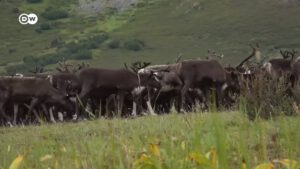Melting Wetlands: Can nature slow down climate change?
This documentary explains what happens when carbon escapes from swamp and moorland areas into the atmosphere and how nature’s potential can be used to slow down climate change. European peatlands contain five times more carbon than European forests.
As the permafrost melts, greenhouse gases are released, which in turn accelerate global warming. Peatlands and wetlands play an important role in global warming because they influence the greenhouse gas cycle. But not all bogs are the same.
Some bind carbon, while others release it into the atmosphere in the form of carbon dioxide and methane emissions. The film follows the work of two research teams investigating the influence of moors and swamps on the climate. Greenhouse gases escape when permafrost moors melt.
But swamp and mire areas that have been thrown out of balance, for example by plantation farming for the production of palm oil, can actually accelerate climate change.
It is therefore very important that the carbon remains in the peatland,” says Dr. Minna Väliranta from the Environmental Research Centre at the University of Helsinki.
The researcher and her team are conducting field research to collect data on the effects of global warming on Arctic permafrost peatlands. Until now, there has been little data from the far north of Europe; many research findings from other regions have simply been generalized.
About the Author: CLIMATE STATE
POPULAR
COMMENTS
- Robert Schreib on Electricity generation prices may increase by as much as 50% if only based on coal and gas
- Robert Schreib on China made a historic commitment to reduce its emissions of greenhouse gases
- Lee Nikki on COP30: Climate Summit 2025 – Intro Climate Action Event
- Hollie Bailey on Leaders doubled down on fossil fuels after promising to reduce climate pollution
- Malcolm R Forster on Mythbusters tests global warming theory – does CO2 warm air?






